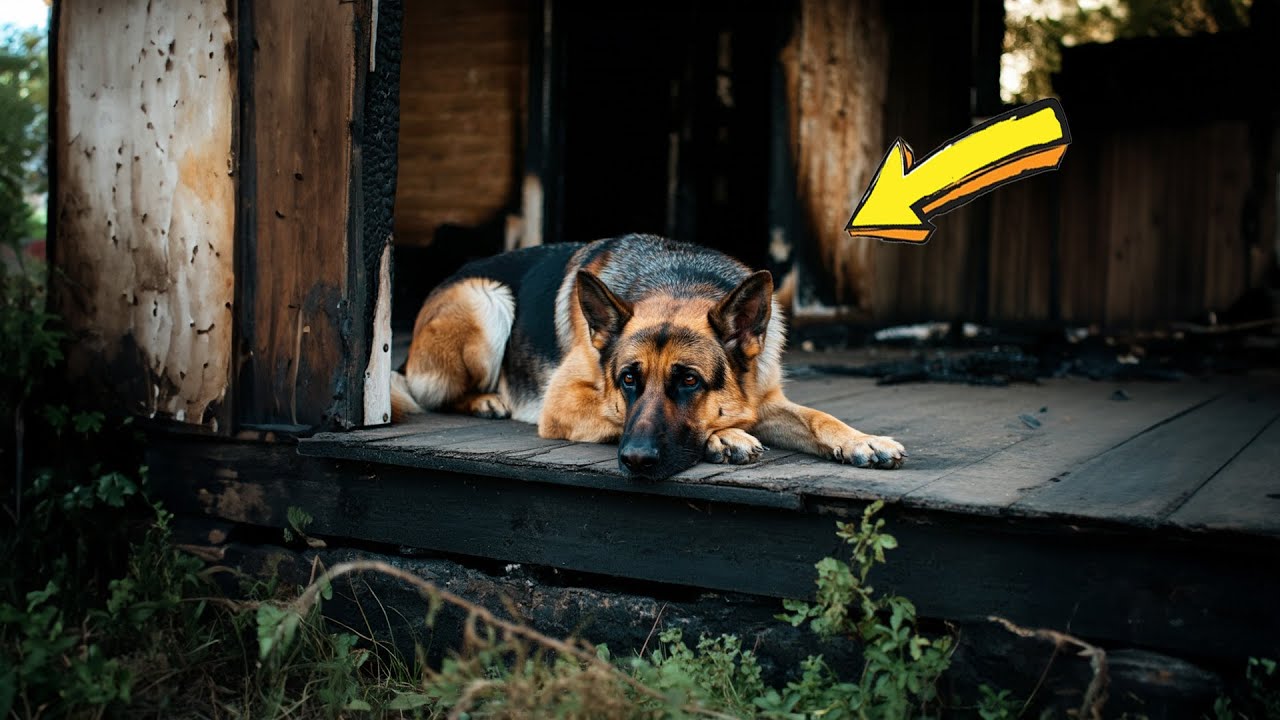Purple Grenadiers are dimorphic species, which essentially means, in this case, that males and females are easily recognisable as their plumages have a lot of differences.
Males have the most striking plumage out of the two. The breast, bellies and under-tail coverts are a striking purple colour that has patches of chestnut-brown, particularly towards the centre of the breast. Around the eye, males have more of the vibrant purple colouring, with both the iris and eye-ring a contrasting orange-red. The rest of the upper parts are a dull brown colour. Legs are light to dark grey, and the bills are mainly red.
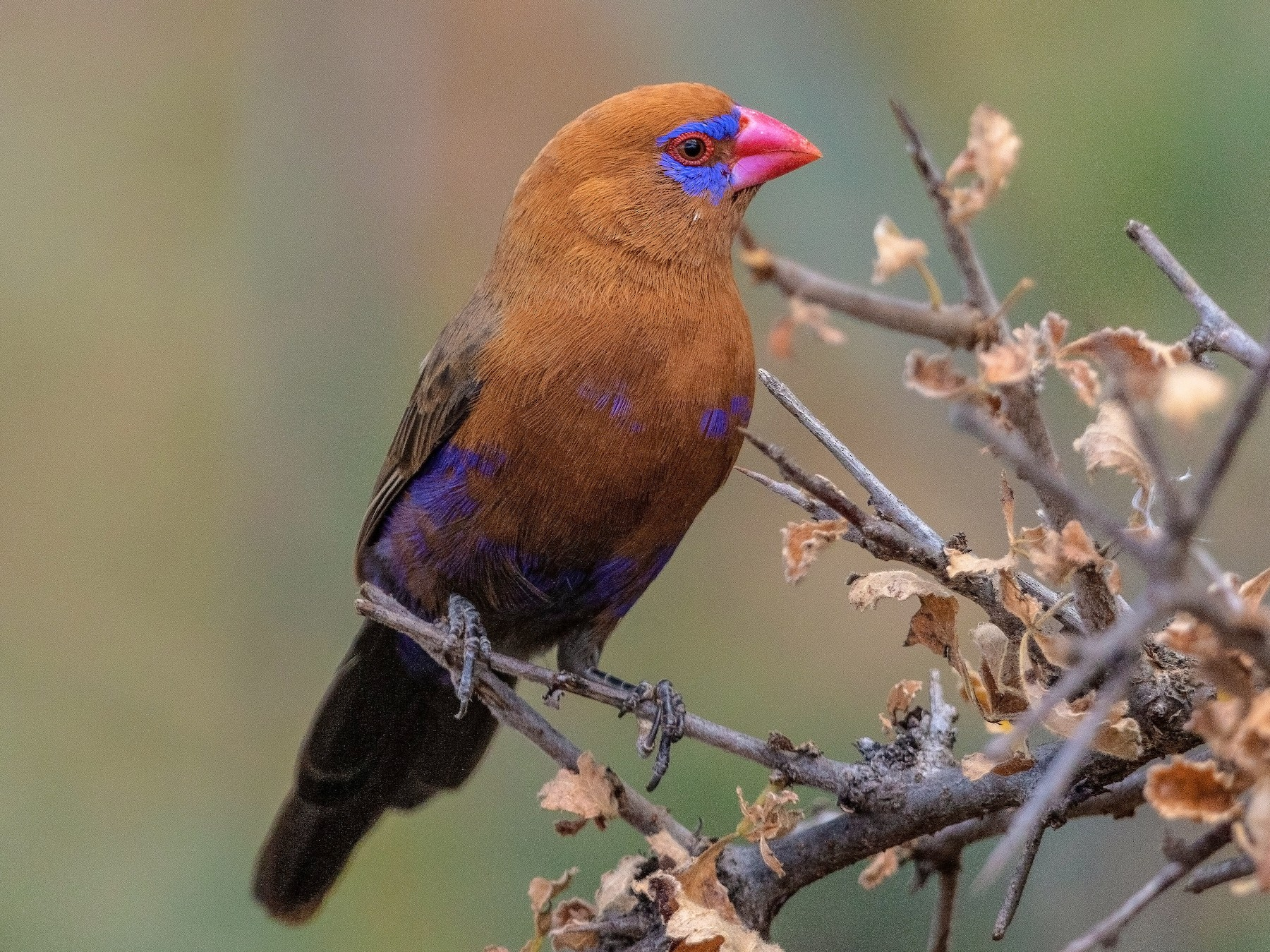
Females are less vibrant to look at. The eye patch is a silvery-blue colour, and underparts are light brown with white speckling and barring. The upper parts are mostly brown, and the feet, legs and beaks are the same colour as the male.
Juvenile purple grenadiers are quite similar to the female plumage, but they lack the patch on the face and the spots and barring on the chest. It usually takes between 4 and 6 months for juveniles to reach their full adult plumage.

The call that is usually made when near a potential mate is a ‘wis-wis’ or simply a ‘wis’ sound. The song is described as a high pitched ‘chit-cheet tsereea-ee-ee tsit-tsit‘.
Both females and males sing and sound similar. Geographical differences can sometimes mean the song will slightly vary.
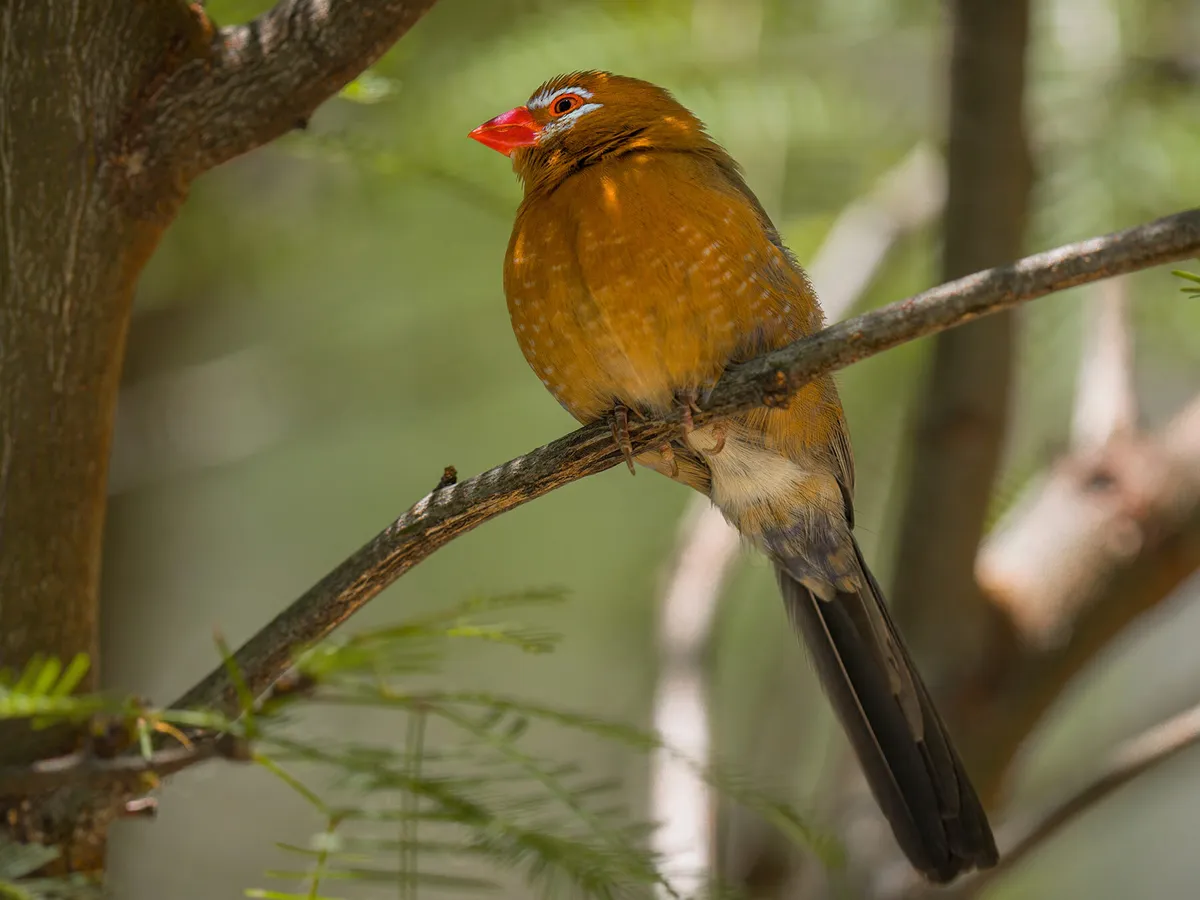
The diet of the purple grenadier is relatively simple and comprises mainly of grass seeds and insects like termites and small spiders. These birds prefer to feed on the ground.

Purple Grenadiers can be found across parts of Eastern Africa, although the best places to see them are in Kenya, East and Southern parts of Ethiopia, North-east Uganda and North and Central Tanzania. They are resident birds and can be found year-round.
The preferred habitat for these birds is an arid country, particularly with acacia thickets, thorn scrub and occasionally open bushy areas. They can be found anywhere from sea level up until heights of around 1600m.
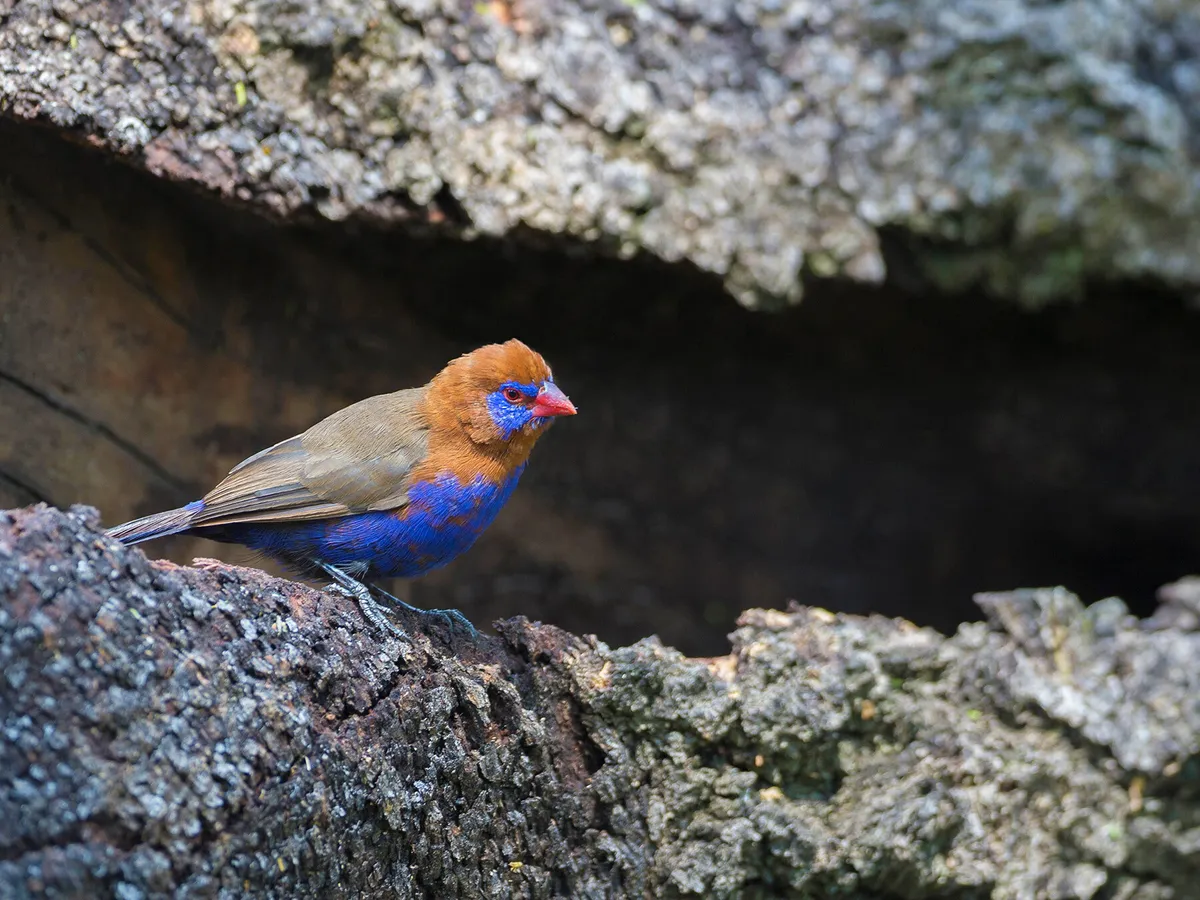
Although these birds are fairly common throughout their range, they are quite secretive birds and are often found foraging in a pair or small group, but sometimes even on their own. Although secretive, they can be rather noisy with frequent calls and songs, particularly during the breeding season.
Male birds also become aggressive during the breeding season – particularly to other waxbill cock birds – as they are very territorial.
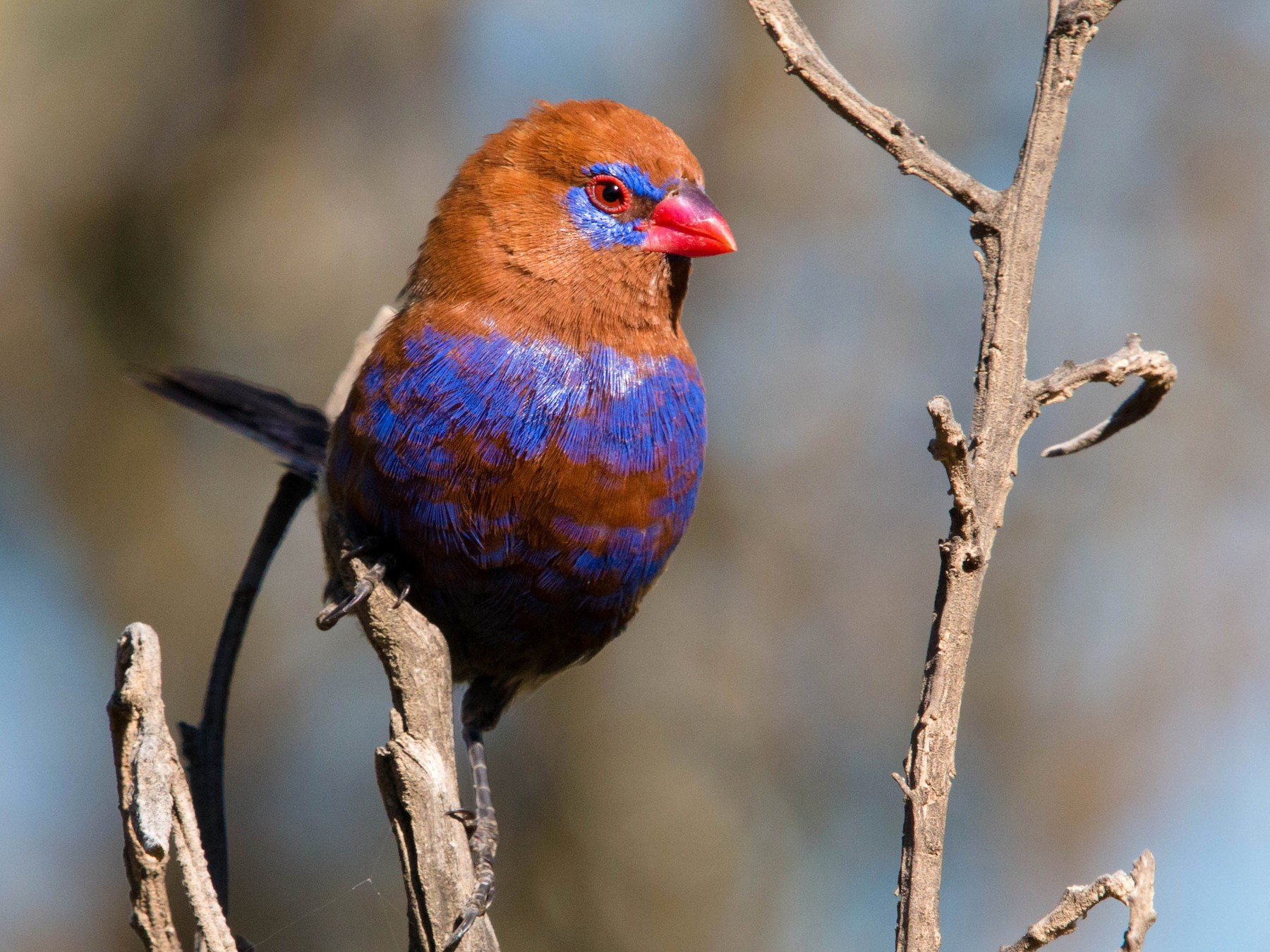
Breeding starts during the rainy season, which varies depending on which part of east Africa the birds are in. In Ethiopia, this generally means between March and July, Tanzania November to March and Kenya usually March and April (although this can sometimes be earlier).
For the courtship display, males will either hold a grass stem or feather in their beaks and bob up and down near a female. They will then stretch the neck will the bill facing up before bowing the head side to side. Interesting females will fly over to the male and sometimes join in with the bobbing up and down.
Nests are constructed in low shrubs, and bushes are built by both males and females. The nest is made from fine grass with a lining of feathers. Pairs can lay up to three clutches a year, of 3-5 white eggs are laid and incubated for up to 14 days. Young birds will fledge when they are around 21 days old and may return back to the nest at night for up to 2 weeks after that.
Young male birds will usually sing from 2 months after fledgling.
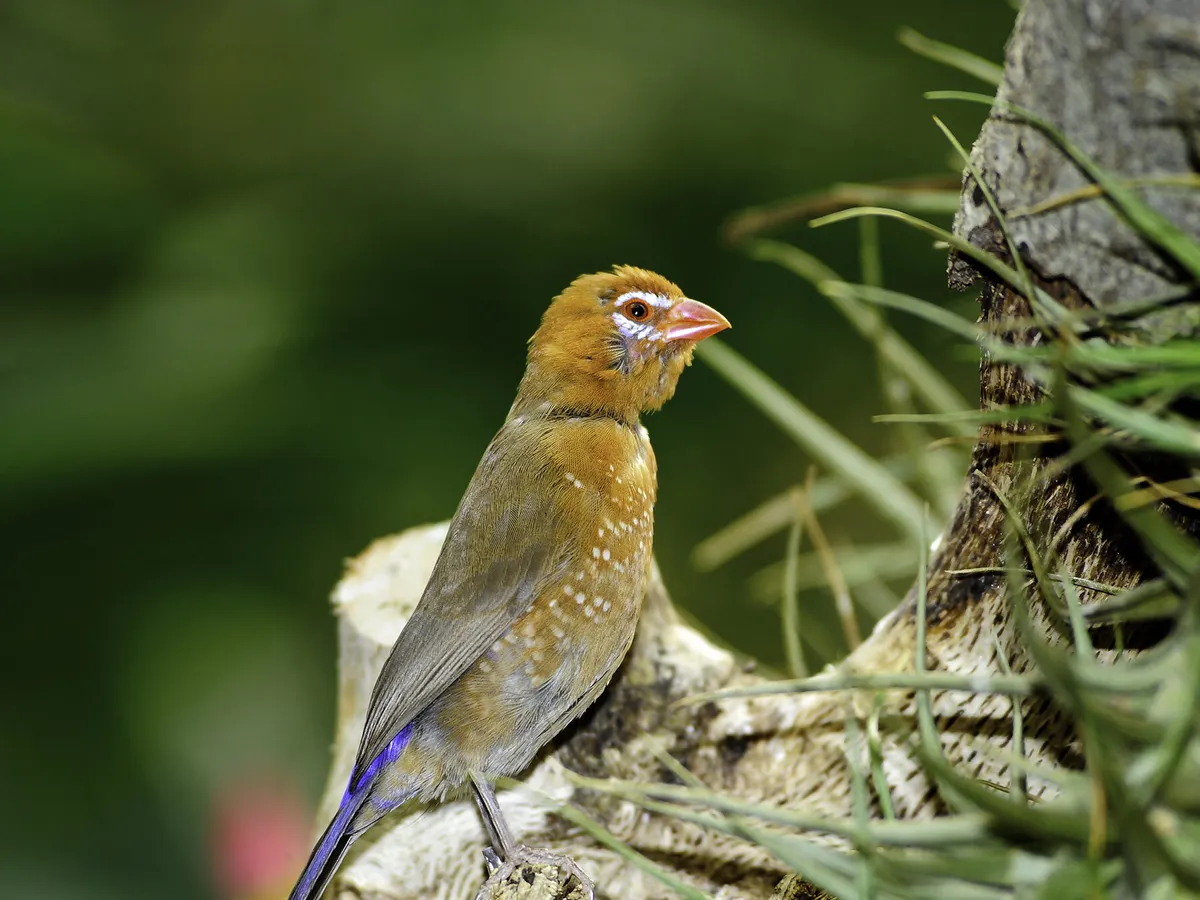
The average lifespan for a purple grenadier is around 7 years.
Source: lovewildanimals.com
